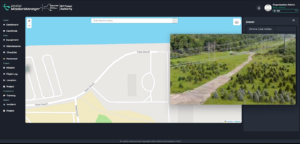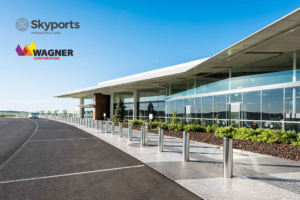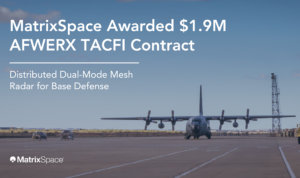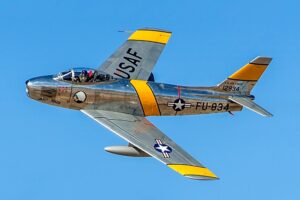Cala Sapone, Sant’Antioco, Sardinia at sunset
Mavic 3 pro with 70 mm camera (3x)
The post Cala Sapone, Sant’Antioco, Sardinia at sunset appeared first on DRONESTAG.
Cala Sapone, Sant’Antioco, Sardinia at sunset
Mavic 3 pro with 70 mm camera (3x)
The post Cala Sapone, Sant’Antioco, Sardinia at sunset appeared first on DRONESTAG.
 .ANRA Technologies, a global supplier of uncrewed traffic management and operational solutions, successfully demonstrated its state-of-the-art drone inspection capabilities at the New York Power Authority’s (NYPA) facility in White Plains, New York. The event, held on August 1, featured live drone operations and showcased ANRA’s Mission Manager software to NYPA executives and invited guests. The […]
.ANRA Technologies, a global supplier of uncrewed traffic management and operational solutions, successfully demonstrated its state-of-the-art drone inspection capabilities at the New York Power Authority’s (NYPA) facility in White Plains, New York. The event, held on August 1, featured live drone operations and showcased ANRA’s Mission Manager software to NYPA executives and invited guests. The […] .Skyports Infrastructure, a supplier of vertiport infrastructure for the Advanced Air Mobility (AAM) industry, and Wagner Corporation, an Australian property, infrastructure, and sustainable development company, have partnered to explore vertiport development opportunities in the state of Queensland, Australia. The agreement follows a recent announcement between Wisk and Skyports to identify an Entry-into-Service (EIS) network for […]
.Skyports Infrastructure, a supplier of vertiport infrastructure for the Advanced Air Mobility (AAM) industry, and Wagner Corporation, an Australian property, infrastructure, and sustainable development company, have partnered to explore vertiport development opportunities in the state of Queensland, Australia. The agreement follows a recent announcement between Wisk and Skyports to identify an Entry-into-Service (EIS) network for […] .Insitu Inc., Bingen, Washington, is awarded a $9,299,186 firm-fixed-price order (N0001924F0097) against a basic ordering agreement (N0001921G0007). This order provides unmanned aircraft systems intelligence, surveillance, and reconnaissance services in support of the Department of Defense and other government agencies. Work will be performed in Bingen, Washington (20%); and various locations outside of the continental U.S. […]
.Insitu Inc., Bingen, Washington, is awarded a $9,299,186 firm-fixed-price order (N0001924F0097) against a basic ordering agreement (N0001921G0007). This order provides unmanned aircraft systems intelligence, surveillance, and reconnaissance services in support of the Department of Defense and other government agencies. Work will be performed in Bingen, Washington (20%); and various locations outside of the continental U.S. […] With current technology, it will take more than 70 years and cost 33.5 billion euros to demine Ukraine, which has a mined area of 144,000 sq. km. Now, a Ukrainian tech entrepreneur in Denmark aims to make demining Ukraine cheaper, faster and safer. He has moved to Odense to accelerate development of his robotics and […]
With current technology, it will take more than 70 years and cost 33.5 billion euros to demine Ukraine, which has a mined area of 144,000 sq. km. Now, a Ukrainian tech entrepreneur in Denmark aims to make demining Ukraine cheaper, faster and safer. He has moved to Odense to accelerate development of his robotics and […] – MatrixSpace has been selected for a $1.9M AFWERX Tactical Funding Increase (TACFI) Phase II Sequential contract to develop a distributed dual-mode mesh radar for base defense, based on the MatrixSpace Radar hardware platform. The project runs for 22 months and starts immediately. The project, in support of the Air Force 87th Security Forces Squadron, involves scaling MatrixSpace Radar for use in tactical, expeditionary, […]
– MatrixSpace has been selected for a $1.9M AFWERX Tactical Funding Increase (TACFI) Phase II Sequential contract to develop a distributed dual-mode mesh radar for base defense, based on the MatrixSpace Radar hardware platform. The project runs for 22 months and starts immediately. The project, in support of the Air Force 87th Security Forces Squadron, involves scaling MatrixSpace Radar for use in tactical, expeditionary, […] For a brief, harrowing moment during the Korean War, MiG Alley was considered the most lethal place on earth. This narrow strip of airspace where the Yalu River meets the Yellow Sea in northwest North Korea became the arena for the most brutal dogfights since World War 2. Here, American and Soviet pilots, engaged in […]
For a brief, harrowing moment during the Korean War, MiG Alley was considered the most lethal place on earth. This narrow strip of airspace where the Yalu River meets the Yellow Sea in northwest North Korea became the arena for the most brutal dogfights since World War 2. Here, American and Soviet pilots, engaged in […]New Enclosure Enables Advanced Drone Research and Testing at UTSA By DRONELIFE Features Editor Jim Magill Standing on the campus of the University of Texas at San Antonio a 900,000-cubic-foot enclosure composed of telephone poles and wire netting provides university researchers and drone enthusiasts a chance to test out and fly their aircraft without having […]
The post University Employs Huge “Batting Cage” to Conduct Drone Test Flights appeared first on DRONELIFE.
Partnership Aims to Eliminate the Need for Visual Observers in Emergency Drone Deployments BRINC, a leading innovator in drone technology for first responders, has announced a strategic partnership with Echodyne, a company known for its advanced ground-based radar systems. This collaboration aims to integrate Echodyne’s cutting-edge MESA® radar technology into BRINC’s Drone as First Responder […]
The post BRINC and Echodyne Collaborate to Enhance BVLOS Drone Operations for First Responders appeared first on DRONELIFE.
Will passenger drones exist in our lifetime? For now, operations are severely limited to mostly one-off media stunts. But in these four cities, U.S. passenger drones are more likely to become a reality.
The Lufthansa Innovation Hub, which is an arm of the German airline of the same name, teamed up with V2Air, Roland Berger and Unisphere to study the most viable global cities for launching Advanced Air Mobility (AAM) operations. AAM refers to a broad category of innovative aircraft that includes passenger drones which could be used for situations including intra-city travel or transit between intercity routes that would be too short for a full airplane to cover but too long to drive.
Using June 2024 data, the team analyzed 16 major U.S. cities. From there, it ranked those cities based on factors critical in launching viable operations of U.S. passenger drones. Those factors included:
Cities were then given a feasibility score, which consists of:
They also received a viability score, consisting of:
Of the U.S. cities that had high feasibility but low viability were:
Of the U.S. cities that had high viability but low feasibility were:
Meanwhile, Denver, Houston and Philadelphia didn’t score particularly well on either metric — so don’t expect passenger drones in those cities anytime soon.
But which cities scored well in both feasibility and viability? Four cities stand out: Charlotte, Chicago, Los Angeles and Orlando. Here’s why:
Charlotte: Charlotte stood out for its favorable terrain. Given how flat it is, there are fewer vertical ascents and descents, which in turn reduces energy consumption. More energy-efficient aircraft means aircraft can run longer or turnaround faster without frequent recharges. This makes operations more efficient for passengers and also saves money for operators.
Charlotte also scored highly on the time savings metric, which calculated how much time flying through the skies could save versus sitting on a bus or train. Charlotte has poor public transportation infrastructure coupled with high traffic congestion. Without better public trains and buses, Charlotte could at least be positioned to benefit massively from small aircraft overhead to get people quickly from place to place.

Chicago: Chicago didn’t dominate one category in particular, but it got generally high marks all around. Aside from the skyscrapers, the terrain around Chicago is flat. And while public transportation within Chicago is good, it’s weaker to the surrounding suburbs. Perhaps a small aircraft could pickup passengers on the shores of Lake Michigan in downtown Chicago and fly over the water, quickly funneling people to cities on the other side that would otherwise necessitate an hour or more drive around the lake, such as Michigan City in Indiana, or Milwaukee.

Orlando: Orlando also scored especially-high marks in terrain feasibility. After all, it’s quite flat with no mountains (unless you’re counting Walt Disney World’s Big Thunder Mountain as one). Orlando also scored relatively high on the time savings metric as, again, its public transit is pretty weak.

Los Angeles: Los Angeles has already made some headwinds in the AAM department. For example, it’s already initiated a partnership with a group called Urban Movement Labs, which works with another company called Skyroads, which is based in Germany. Together, they’re exploring the potential benefits of AAM specific to the sprawling SoCal city. That includes some exploratory efforts on developing the necessary infrastructure and regulations for safe and equitable AAM implementation.
And with Los Angeles hosting the Olympics in 2028, it has some incentive to offer even more innovative transit solutions.
Though the following cities didn’t score highly on both the feasibility and viability metrics, some cities did still stand out for dominating certain categories. Some of those highlights are:
Miami: Miami gets high points in the authority category. That’s because the Florida Department of Transportation already has its own AAM working group that works with other stakeholders, including those from the private sector, to develop an AAM integration plan. It also scored relatively high marks on weather — though watch out for rains and hurricane season.
San Diego: Speaking of rain, San Diego has very little of it. The sunny, SoCal city has very little rain. San Diego scored the highest of any U.S. city in terms of weather. According to Lufthansa’s report, it has excellent weather conditions for more than 95% of the year, which enables more frequent service availability (and more days for AAM companies to generate revenue).
Here’s how all those U.S. cities (coupled with some European cities) all look laid out on both the viability and feasibility scales, in a graphic from the Lufthansa Innovation Hub:
There are lots of developments in the AAM world. Lufthansa’s conducted a separate analysis earlier this year and found that innovation has been surging, especially over the past couple years. In 2024, a record 760 patents were filed related to AAM, as well as the similar fields of UAM and RAM.
The world of AAM sometimes feels like a confusing alphabet soup of related terms such as UAM (Urban Air Mobility) and RAM (Regional Air Mobility). Another German-based group, Drone Industry Insights, laid it all out in a post earlier this year explaining those terms and their differences.
Perhaps the biggest name in AAM is Joby. It’s eyeing a takeoff of air taxis in Dubai by 2025. They would be piloted by humans, but would operate in a manner similar to the visions for pilotless taxis that would tote people around the congested city through Skyports (sometimes called Vertiports).
Which U.S. city would you most like to see passenger drones operate in? Leave a comment below!
The post These 4 U.S. cities are best suited for passenger drones appeared first on The Drone Girl.

